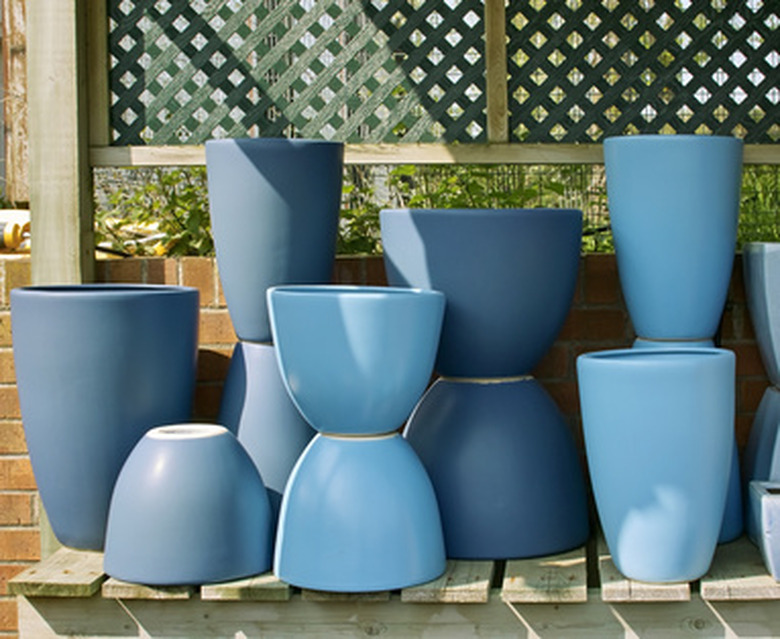Container Size & Plant Growth
Container gardening offers many advantages, including having a variety of different colored and sized pots and unusual containers. Many factors influence the success of plants in containers, including container size. When grown in the appropriate sized pot, a plant thrives because its root system is properly contained.
Function
A plant container holds within it the soil, nutrients and moisture the plant needs to survive and thrive. The plant sends out roots, just as it would in an in-ground garden, into the potting mix in search of food and water. The container acts as a microcosm; the root system has a limited space in which to grow and extend itself.
Significance
How well a plant does is dependent on a balanced relationship between the exposed portion of the plant and the root system buried in the potting soil. The leaves and stems process sunlight for photosynthesis and hormone production as well as provide air exchange within the plant; these are necessary elements for root growth. The roots provide a delivery system for water and nutrients. If the root system is overgrown due to limited space, or waterlogged due to excessive moisture in a large space, the exposed portion of the plant suffers.
- Container gardening offers many advantages, including having a variety of different colored and sized pots and unusual containers.
- How well a plant does is dependent on a balanced relationship between the exposed portion of the plant and the root system buried in the potting soil.
Effects
A small plant alone in a large container may send out roots, but smaller plants have shallower root systems. One of two things may happen. Frequent watering to keep the upper soil moist drowns the root system. Less frequent watering results in the upper portion of the soil, where the root system is, drying out, but the lower portions of the soil remain damp. The upper portion of the plant is not able to grow larger than its DNA dictates, so the root system cannot reach the moisture because the exposed portion of the plant cannot give it enough processed energy to do so.
Considerations
The size of the container isn't limited to the diameter of the opening. The depth of the container is equally important. Flower boxes have a shallow depth, sometimes no more than 6 to 8 inches. Herbs that are continually harvested, small flowers and ivy plants have shallow roots systems and so do well in such a limited depth. A tomato plant, however, requires considerable depth, requiring a 5-gallon pot for just one plant. The depth of that pot should be approximately 18 inches or more.
- A small plant alone in a large container may send out roots, but smaller plants have shallower root systems.
- Less frequent watering results in the upper portion of the soil, where the root system is, drying out, but the lower portions of the soil remain damp.
Size
Almost any container may be used for planting, as long it provides some form of drainage and isn't toxic to the plant. Half-barrels, wheelbarrows, crates and boots can all be modified into planters. Select containers, whether commercial or customized, to suit the size of the plant at its full growth.
References
- Ohio State University: Container Vegetable Gardening
- "Pots and Plants"; Barbara Segall; 2008
